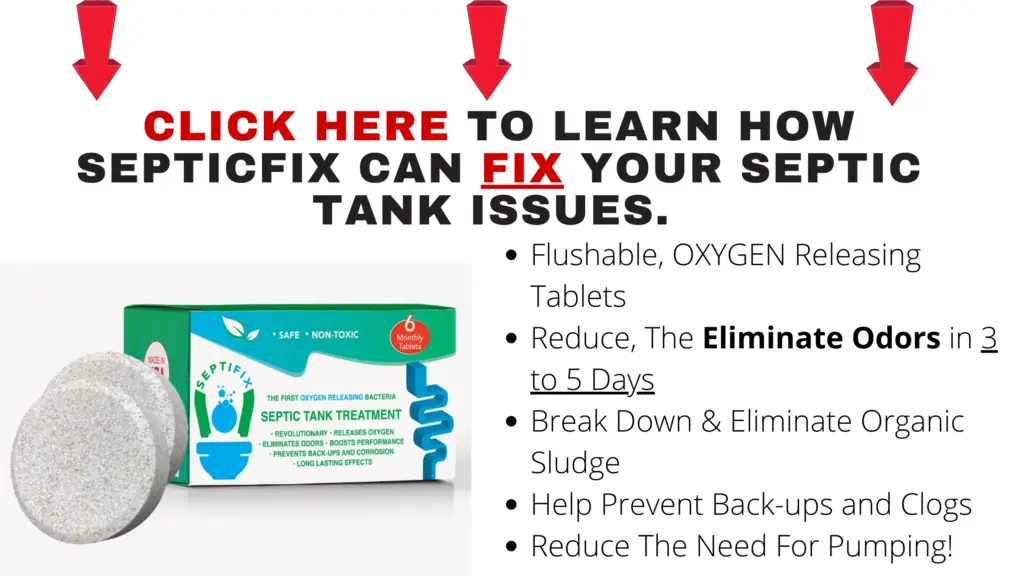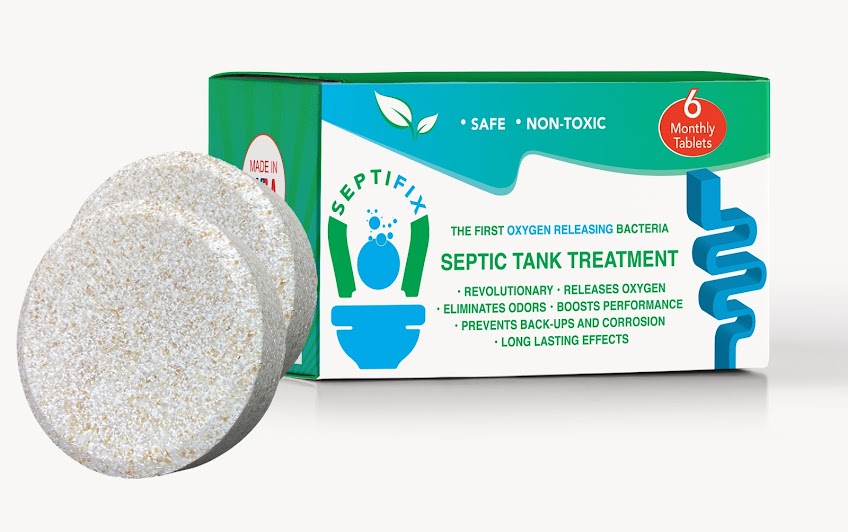Common Leach Field & Drain Line Problems
If you are thinking about installing a septic system on your property, your contractor may have only told you about the leach field late in the planning stages. You already knew there would be a septic tank, of course, but how does the leach field work? Are there inherent problems with a network of leach lines under your yard?
CALL 855.925.0760 For A Quote on DrainField Repair/Service
What is the most common problem with leach fields? The biggest problem with leach fields is when solids improperly filter into them, causing a microbial imbalance of the field and surrounding soil.
This can happen for a variety of reasons, which I will explain below. There are also a few other problems you’ll learn how to anticipate and solve. Keep reading for all of that along with plenty of other tips on maintaining and managing your leach field.

Why Does A Leach Field Fail?
While, to be clear, the pros of having a septic system far outweigh the cons, there are problems that can occur. Any complicated system in the home can encounter issues. More often than not, leach fields fail because substances are entering them that they are not designed to intake.
Think of a leach field like a digestive system. If you eat a sandwich, your body will have no problem sending it through your system, so to speak. What happens if you try to eat a telephone? Well, nothing good, that is for sure.
The same goes for leach fields: they only work well if they are filtering what they are designed to handle: wastewater. Keyword: “water”. A leach field is only designed to handle liquid. So if solids or sludge (let’s not get more detailed than that) get into it, major problems begin. This problem has two causes:
Too Much Sludge
Too much sludge in the septic tank can cause it to overflow into the lines. That happens after a long period of use; you will need to get it all pumped out. The problem occurs during normal septic system operation:
- First, waste water first enters the tank.
- Over a few days, the water gradually separates-
- Cooking oil and lighter material moves to the top.
- Water and other liquid stays in the middle
- Sludge settles to the bottom
- Bacteria works to break down the sludge (Over a very long period of buildup, this slowly becomes less effective.)
- The rest of the liquid flows through the filter to the leach field
- Through small holes in the leach lines (pipes), the water trickles into the surrounding underground gravel or sand
- The gravel and sand act as biological filters
Step 3 revealed the problem. Although bacteria dissolve the sludge, they can never quite remove all of it. Odds are you are adding wastewater faster than they can dissolve it. The problem is only made worse depending on how big your family is. Overall though, a septic system works very well. This is a problem that will not occur tomorrow; it takes years to become an issue.

Not Enough Bacteria
The other reason sludge can overflow into the leach field is that there are not enough bacteria to dissolve it, even without overuse. Even if wastewater is entering the system at normal volumes, sludge still will not get dissolved if there are no bacteria. Here are a few common things that you should avoid entering your septic system and killing the helpful bacteria:
- Household cleaning chemicals– If you were just cleaning and have material that can just be flushed, think again. Cleaning chemicals like bleach and grout cleaner are great at cleaning dirt and bacteria. That is good for your bathroom, but can be bad for your septic tank. Throw these items in the garbage instead.
- Medicines– If you do not need the rest of that prescription, do not flush it down the drain if your house has a septic system. Medicines are well known for destroying all the bacteria in your tank. Even the medicine you are taking can mess up the tank over time.
- Anything else that is bad for bacteria– Your toilet and garbage disposal are not trash cans. Even though it may be tempting to throw stuff in them so you do not have to take out the trash as often, just remember, most things that keep you clean and healthy do so by killing bacteria. Do not flush or grind up these items: Read more about Septic Additives here.
- Find a full list of items that are safe for your septic system.
- Hair
- Coffee grinds
- Dental floss
- Diapers
- Kitty Litter
- Sanitary Napkins
- Fat
- Grease
- Paper towels
Read our articles on what items to avoid putting into a septic system.
Without enough bacteria, sludge will build up a lot faster than it normally would, so you will have to get the tank pumped out much sooner.
Other Leach Field Problems and How to Solve Them
Solids entering the leach field are not the only reason why they can malfunction. Here are some of the other problems that can occur:
Vegetation
Roots from nearby trees, or plants that love water can damage a leach field by intruding into it and causing damage to the lines. Remove all vegetation from the drain field and make sure any lines are fixed. Then you should be good to go. Before you install a leach field, make sure it is at least 10 feet away from any vegetation. Likewise, do not plant anything within that range either.
Hydraulic Overload
Sometimes it is not just too many chemicals in the water, but just the sheer amount of water that overloads the septic system. This can occur from practices like:
- House parties
- Too many loads of laundry in a row or at the same time
- Leaky faucets creating a continuous water flow
Solving those problems is fairly simple:
- Do not have an excessive number of people in your home at once using the facilities
- Stagger loads of laundry across multiple days, or different times of day
- Get any leaky faucets fixed as soon as you notice them
System in a Bad Location on Property
The hydraulic performance of the leach field can be affected in multiple ways if it is installed in a bad place where: Read our article on best location for your septic system.
- The groundwater table is shallow
- Seasonal standing water accumulates
- Roof storm water runoff accumulates
- Basement sump pump discharges
Try these solutions:
- Divert the water
- If that fails, you may have to move the leach field to higher ground
How Do You Know When Your Leach Field Is Failing?
But how will you know if your leach field is having problems in the first place, if you are aboveground? Without going into gross details, trust me, you will just know sometimes. But sometimes it is not so obvious. Here are some clues that should alert you to a leach field problem:
- Septic system odors above the leach field and/or septic tank
- Wet spots of sewage rising to the surface from above the leach field
- Ironically, if the grass above it is greener and healthier than the rest of your grass in the yard. That means it is probably getting too much “fertilizer”.
- Of course, any high-level water or pump alarms
- Slow flushing toilets or slow sink drains
- Or worse, toilets or other plumbing from inside your house backing up
If your leach field is failing, you will want to conduct a thorough inspection of the:
- Septic tank
- Leach field
- Distribution box
If you are a homeowner and this starts to get a bit too technical, you might want to call in:
- Regulators
- Soil Scientists
- Engineers
It is generally a good idea to check the distribution box first before digging up too much, as it can often provide valuable insight on its own. For instance, if there are a lot of solids in the box, it indicates that they are not getting separated out enough in the tank.
How Do you Clean Out Leach Lines?
What if your leach field is not having one of the specific above-mentioned problems, but rather just will not work as quickly and effectively as it used to? Well, it may just be time to clean out the lines. If the material surrounding the lines is made from inferior material like ground-tire or foam peanut, this will only buy you a small amount of time, so you want to just consider all-out replacement. But if you have a standard field with rock or sand, a good cleaning can get it to run almost like new. Here is a step-by-step guide:
CALL 855.925.0760 For A Quote on DrainField Repair/Service
- Hook it up to a sewer jetter and blast it, set at 6-10 gpm (gallons per minute) at 3,500-4,000 psi (pounds per square inch)
- Do this until you cut through the sludge and establish flow
- If there are any roots causing interference, you can cut through them this way too
- Once the leach field is running smoothly, treat it with bacteria to restore the biochemical balance
Note: Do not bother trying to clean leach fields that are only hooked to washing machines if a lint trap tank was not installed. Cleaning the field of all the lint and soap will be nearly impossible.
Helping the Environment
Naturally keeping it clean should address environmental concerns, which makes sense when you are talking about sending waste and chemicals into the ground. Consider installing an aerator system. Benefits include:
- Helping to increase the breakdown of solids and particulate matter inside the septic tank- The more of this that occurs in the tank, the less you need to clean the leach field.
- Increasing the power of the bacteria themselves- not be a small amount either, more like 30 times or even more
It may seem like an expensive addition, but as is the case with a septic system, you are saving a lot of money in the long run by doing this. This massive increase in bacteria breakdown power means less maintenance and less risk of clogging as well.
How to Unclog a Leach Field?
If your leach field is clogged, that is obviously a huge problem. Try performing a basic cleaning as described above. If that does not work, you will probably need to call in a specialist. But if you have a long cord-based auger and a distribution box, (and are knowledgeable in using the auger) you might consider giving this a try first:
- Dig down to the distribution box and open it up.
- Feed the mechanical end of the auger into the leach line that has the clog.
- When you feel it reach the clog, slowly apply pressure by pushing and pulling it back and forth to break up the clog.
- Turn off the auger for safety, then pull it out.
- Follow the above flushing method to clean the leach line.
Preventing Clogs
Obviously the best way to prevent a clog is to stop it from happening in the first place. A root from a far enough away tree that, after years of growth, has intruded into your leach field is sometimes not avoidable. However, many clogs can be prevented, or at least be made to occur less often. Here a few tricks:
- Use less water, and fix leaky faucets. Hydraulic overload affects the filtration system.
- Do not put anything but water and waste down your drains
- Copper sulfate
Copper sulfate, in particular, will kill most roots that develop in your leach lines. To apply:
- Pour ½ a cup into your toilet at a time and flush until it is dissolved.
- Keep doing this until you have flushed 2 pounds.
- Do not use the water for about 4 hours while the sulfate takes effect in the leach field.
- Repeat 3 times per year.
This seems tedious, but it is still way better than uprooting a whole tree or worse, moving your whole septic system.
How Do You Test A Leach Field?
If you have read this far, you are now aware of the precautions you need to take when scoping out the location of your septic system. But how do you test the proposed leach field area to see if it will work there? Here is how:
- Auger a few small holes in the area, about 5 feet deep. You want to make sure the top soil stays consistent.
- Pull the soil out and lay it out so you can examine it. You are looking for a good, bright color, which means it is well-drained. If there is too much clay or irregularities, it is not a good spot.
- The more usage you anticipate, the bigger you should make the leach field. For example, a campsite’s leach field will probably need to be a lot bigger than one for a ranch house.
Should I Get a Septic System With A Leach Field?
As you may have probably guessed by now, not every single business in the world has a leach field. They take up a lot of space and are not exactly cheap to install. In cities, the miracle of modern plumbing means that your wastewater makes its way to the local sewage treatment facility without you even thinking about it.
If you have a large plot of land in the suburbs or a rural area, there is a good chance you already have a septic tank. It is simply not feasible or economical for municipalities to run miles and miles of pipe to service one home. Therefore, they will often require at least a septic tank be installed whenever a new house is constructed.
The problem with having just a septic tank, though, is that they fill up a whole lot faster if there is no way for anything in them to drain out. You will have to pay a company to keep coming by and pumping it out.
Thus even though it seems expensive right now, it is much cheaper to install a leach field in the long run. It filters out much of the liquid from waste in a way that is natural and safe not only to you, but to the environment as well. Some of the benefits of having a leach field include:
- Far lower frequency of pumping out your septic tank
- Minimal maintenance
- Fertilizes the surrounding soil, which helps your yard (Save money on expensive store-bought grass fertilizer!)
- Less smell from your septic system
- Totally safe under proper maintenance and occasional checks
Is It Safe to Play on a Leach Field?
But what if it is maintained? Sure it is safe from afar, but what about actual yard use? Well, rest assured, as long as you properly maintain your leach field with the methods described above, you have nothing to worry about.
When Is It Not Safe?
That is certainly the shorter question. Essentially, your leach field is not safe if it falls into disrepair. Keep kids and pets away when:
- Trees and shrubs (and their long roots) are nearby
- Large pools of water are collecting above it (That is…not water)
- There is any strong odor (could indicate leaking of solids into field)
- Any equipment is exposed from erosion
It is also not a good idea to plant a garden on or close to your leach field. Even though that part of the yard is healthy for wildlife, the roots will still damage the lines.
But again, as long as you are treating your leach field as per specifications and keeping it running properly, you can treat it just like the rest of your backyard. It will blend in with the rest of the grass, and nothing should be exposed.
What Can You Do On a Leach Field?
Anything you would do on a normal backyard, for the most part:
- Let the kids play
- Set up a volleyball net
- Have a cookout
- Set up tables and chairs
- Ride bikes
- Snowball fights
- Sunbathe
Just to name a few.
Can A Leach Field Collapse?
In a word, yes. But not with care and common sense. Typically the sand and rocks built into the field keep it sturdy, but there are still the lines underneath that cannot handle a ton of weight. If you do not want your leach field collapsing, do not get carried away using the surface for these things:
Swing Set
Do not put a swing set or jungle gym over your leach field. You may not notice any issues right away, but this can cause considerable damage to your field over time. Sets are often anchored down, which risks damaging the lines only 6 inches below the surface. Also, as play sets settle, they often sink into the ground. It is not unusual for all 4 inches of the 4 x 4 support beam to end up completely in the ground. That means there is a chance it be resting on and compromising the integrity of one of your lines.
Parking
Often times, particularly in a rural setting, people want to just park their car on the yard. The leach field looks like nice and flat open space, so they might be tempted to just park there. Don’t. If other people, like neighbors or visitors, keep parking on it, build a fence around it. Otherwise you are heading for some very costly repairs.
Lawn Mower
Lawn mowers have been known to cause damage to a leach field, but this is pretty rare. If the septic system is in an average backyard and you are using a basic push mower or ride on, you will not have a problem (Unless any lines or any other components have been exposed).
The problem is more for the much larger, industrial sized ride on mowers. Over time, all that weight riding back and forth over the leach field every week can come to weaken the topsoil. That can result in erosion and exposure, as well as the lines getting damaged from the continuous excess weight.
Similarly, if the leach field is adjacent to a farm, exercise caution with your tractor. Tractors weigh even more, so avoid driving that over your septic system.
Other Types of Leach Fields
We have mostly discussed the standard leach field thus far: the kind with a network of pipes, or lines, resting underground in a bed of rocks or sand (or something similar). While these work great most of the time, there are a few other types of leach fields you may want to consider before breaking ground:
- Chamber Systems
- Dry Well Systems
- Mound Systems
1.Chamber Systems
Rather than a network of lines, a chamber system simply holds fluids in a large plastic container and allows them to seep into the ground. You may not even need a gravel for this, which is an advantage for some people as it certainly makes installation a lot simpler and cheaper. However, chamber systems require a really specific kind of soil composition to make sure it can absorb all of the waste water in this way. They also need to be inspected frequently to confirm they are not causing any problems. As a result of these difficulties, chamber systems typically have a shorter warranty period.
2.Dry Well Systems
“Why even put anything there?” someone must have said at one point. “Just fill it with rocks and call it a day.” That is essentially the whole point of a dry well system. Rather than digging multiple trenches, these are made by digging one big pit. Then they are simply filled with gravel and hooked up to the septic tank.
While these are generally considered just as effective as a standard leach field, they are not buried and are a bit unsightly on private property. Their other problem is their lower surface area, which means they cannot filter as much waste water at a time as leach fields.
3.Mound Drain Systems
In reality, you cannot build a leach field everywhere. As we have alluded to, certain soil just is not suitable for this process. But because of leach fields’ effectiveness, you may decide you want one anyway. The solution is sometimes referred to as a mound drain field or system.
Here, a large mound with the proper soil is built above the ground. Then a leach field is constructed within it, a foot below the surface. This will accomplish the same thing once it is connected to the septic tank, but there are a few drawbacks:
- Additional pumps: Because of gravity, you will probably need an additional pump to get the waste water, once the dissolving process happens, up to the leach field.
- Settling: The more soil you throw on top of something, the more settling that occurs. If you build a whole new mound, there is always that risk of more settling and more exposure as well.
- Eye sore: Will your neighbors be okay with a giant mound showing up in the middle of your backyard? How will your property value be affected? You could lie and tell them you are just really into snow sledding, I guess.
- Excavation: You are no longer just talking a relatively small project with a lawn mower-sized trencher anymore. You are now going to need a full excavation crew and bulldozer tearing up your backyard, just to build a leach field.
CALL 855.925.0760 For A Quote on DrainField Repair/Service











